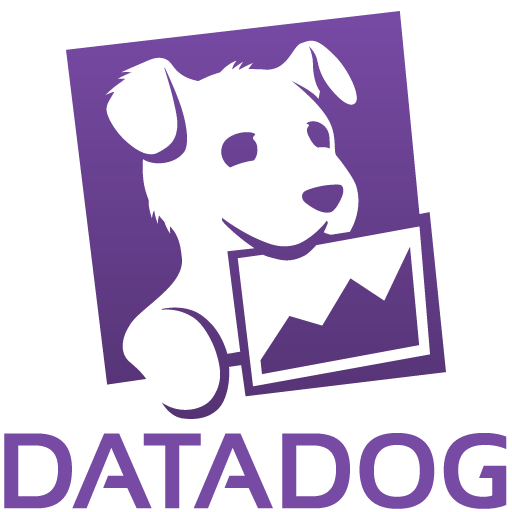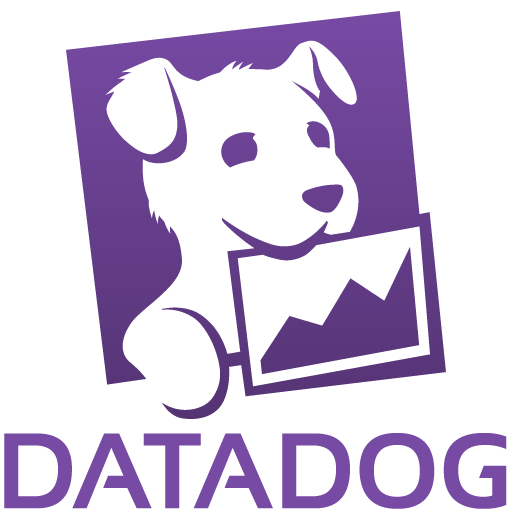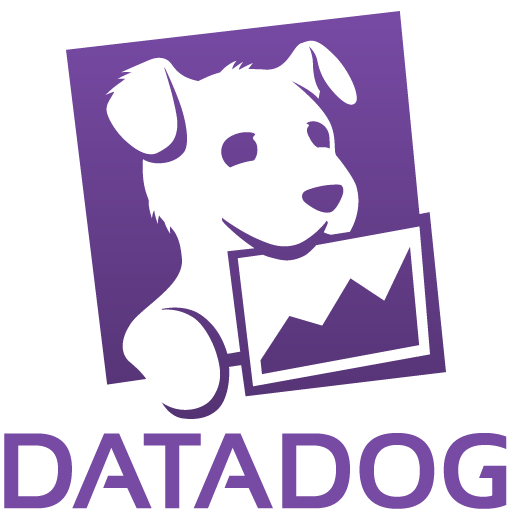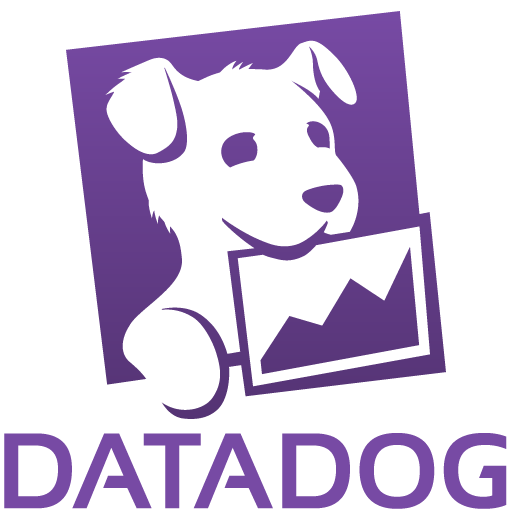
Overview
This listing provides a container-based agent for "Datadog Pro (Pay-As-You-Go". You will need to subscribe to https://aws.amazon.com/marketplace/pp/B01LYD359R before using this agent.
Datadog is a SaaS-based monitoring and analytics platform for large-scale applications and infrastructure. Combining real-time logs, metrics from servers, containers, databases, and applications with end-to-end tracing, Datadog delivers actionable alerts and powerful visualizations to provide full-stack observability. Datadog includes over 250 vendor-supported integrations and APM libraries for several languages.
Highlights
- Turn-key integrations and easy-to-install agent to start monitoring all your servers and resources in minutes.
- Rich, out-of-the-box dashboards plus drag-and-drop tools to create your own.
- Easy-to-use API allows you to extend Datadog integrations and send metrics and events from your own applications.
Details
Introducing multi-product solutions
You can now purchase comprehensive solutions tailored to use cases and industries.

Features and programs
Trust Center

Buyer guide

Financing for AWS Marketplace purchases

Pricing
Vendor refund policy
Custom pricing options
How can we make this page better?

Legal
Vendor terms and conditions
Content disclaimer
Delivery details
Datadog Pro (Pay-As-You-Go)
- Amazon ECS
- Amazon EKS
Container image
Containers are lightweight, portable execution environments that wrap server application software in a filesystem that includes everything it needs to run. Container applications run on supported container runtimes and orchestration services, such as Amazon Elastic Container Service (Amazon ECS) or Amazon Elastic Kubernetes Service (Amazon EKS). Both eliminate the need for you to install and operate your own container orchestration software by managing and scheduling containers on a scalable cluster of virtual machines.
Version release notes
N/A
Additional details
Usage instructions
The Datadog Agent can be deployed as a Docker Container, an ECS or Fargate Task, or via the Kubernetes Daemonset or Helm Chart. For basic usage refer to: /agent. For advanced documentation see: https://github.com/DataDog/datadog-agent/tree/master/Dockerfiles/agent
Resources
Vendor resources
Support
Vendor support
Contact our knowledgable Support Engineers via email, IRC, or in-app chat
AWS infrastructure support
AWS Support is a one-on-one, fast-response support channel that is staffed 24x7x365 with experienced and technical support engineers. The service helps customers of all sizes and technical abilities to successfully utilize the products and features provided by Amazon Web Services.
Similar products




Customer reviews
Monitoring has improved digital experiences and speeds root cause analysis for incident tickets
What is our primary use case?
I intend to use Datadog for application performance monitoring, digital user experiences, and troubleshooting to find the root cause analysis of tickets that will be generated in my managed environment. Digital user experience happens to be the priority for me, as I am evaluating this feature across some competing products.
What is most valuable?
The best features Datadog offers are digital user experience, troubleshooting, and remediation capabilities, which help identify what is going wrong and where. I focused on the root cause analysis of incidents and tickets, as examining the RCAs makes it easier to find remediations and helps with shifting incidents left. Datadog will positively impact my organization by allowing me to handle ticket resolutions at a much faster pace and bring productivity by reducing the number of support engineers required at the monitoring level. If I integrate Datadog with my managed environment or cloud environment, the RCAs and all the left shift will be automated, and with automation, I will be able to reduce the number of support engineers.
What needs improvement?
Datadog could be improved with a simpler graphical user interface that can be extended to non-technical users, such as a CXO, if they want to review the dashboard overall for current tickets and the ticketing dashboard. It would be beneficial to have documentation auto-generated while examining remediations or integration with existing systems.
For how long have I used the solution?
I have been working for more than fifteen years in data center, disaster recovery solutions, and cloud computing, which includes private, public, and hybrid environments.
What do I think about the stability of the solution?
Datadog seems to be more stable, and I really want to have a complete demo before making a call to decide on this.
What do I think about the scalability of the solution?
I hope that Datadog will be able to extend to digital users, even if they are on a scale of thousands for an organization and connect to corporate bandwidth, and the server should be pretty much scalable on the server side.
How are customer service and support?
I find the customer support impressive from what I have heard about Datadog, and I really want to onboard this solution for my customers.
How would you rate customer service and support?
Positive
Which solution did I use previously and why did I switch?
As of now, we are using cloud-native monitoring with CloudWatch and Azure Monitor for our multi-cloud environment, and we really want to extend it to greater detail that will cover deliberations at greater depth. We have looked at ManageEngine and SolarWinds before choosing Datadog, but they were not very impressive, as the amount of Datadog functionality is not available in these two platforms.
How was the initial setup?
I am looking to deploy Datadog on AWS and Azure for multi-cloud management support and really want to extend it at the server side and at the end-user side for digital user experience. I will start with AWS and extend it to Azure six months down the line. I plan to purchase Datadog through the AWS Marketplace once I have the demo.
What was our ROI?
I am looking at metrics that will help me decide whether I need to really deploy Datadog, and the metrics will primarily be centered around reducing the number of employees and cost optimization.
What's my experience with pricing, setup cost, and licensing?
I did not get the complete information regarding the licenses and commercials associated with Datadog, and I would like to have some idea about the license.
What other advice do I have?
I hope to have some literature on how I can leverage my managed support for cloud environments, plus how I can integrate this with my managed support at the end-user devices. Finding the root cause analysis at greater depth, reducing the number of employees to manage or monitor infrastructure incidents, and increasing satisfaction on the application performance monitoring part are the advice I would give to others looking into using Datadog. I give this review a rating of eight.
If public cloud, private cloud, or hybrid cloud, which cloud provider do you use?
Unified monitoring has streamlined global reporting and standardized alerts across teams
What is our primary use case?
My main use case for Datadog is that we offer the application performance management service within PwC as a global team.
A specific example of how my team uses Datadog for performance management is that my team does not directly use Datadog for performance management; however, we work with approximately 300 teams that use it daily for monitoring their apps. One of the most used cases is to observe when services are up and down and if services are not degraded.
We use most of every product within Datadog across the 300 customers that we have internally.
How has it helped my organization?
Datadog has positively impacted my organization because before Datadog, we had multiple APM tools and monitoring tools, which fragmented the service. The reason was that some tools offered benefits to certain teams, while other tools offered different benefits to other teams. With Datadog, we managed to get everyone on board into a single place and a single tool, providing teams with one spot where they can check everything related to monitoring, and enabling management and leadership to have an overview of all tools working together.
I measured the impact of bringing everything into one place through observation, and I can confirm that efficiency in reporting improved dramatically and it became much easier to observe changes. Standardization was a tremendous win for us. Having a set of standard alerts and monitoring in place allowed us to speed up onboarding for every app. Once the resources are in Datadog, the system provides alerting out of the box. Additionally, cost has decreased dramatically.
What is most valuable?
Datadog's best features include very high demand for logs management for alerting on indexed logs and a shift towards Flex Logs for storage and long-term storage. Most recently, BitsAI and the LLM part within Datadog has been in focus for us.
Flex Logs has helped my teams because we are migrating from other services to have a unique place to store all the logs, the non-security logs, and the app logs. This has benefited those teams because they also benefit from other services within Datadog such as APM or other monitoring solutions. By bringing the logs into Datadog, they now have a single place where they can correlate everything.
The LLM integration within Datadog has helped my teams because LLM usage is at the beginning stage right now, and people are very excited. We have all these AI and LLM-based tools, and having the option of monitoring them is a great benefit for us. However, we are in the exploratory phase of this process and have just begun.
BitsAI is very interesting; we have done some testing and we are going to promote it and use it in our production environment. This is a very exciting new tool for us.
What needs improvement?
Datadog can be improved because sometimes it seems it has not been developed for enterprises. We work with over 300 customers, with each customer having multiple instances or apps within Datadog. We are facing difficulties in controlling access, in privacy settings, and splitting usage and costs for these customers.
We want to be able to customize the cost part, and we would appreciate more granular access control.
For how long have I used the solution?
I have been using Datadog for four or five years.
What do I think about the stability of the solution?
Datadog is stable.
What do I think about the scalability of the solution?
We have never had an issue with Datadog's scalability.
How are customer service and support?
Datadog's customer support is good; it could be improved in terms of communication, but it is adequate.
How would you rate customer service and support?
Which solution did I use previously and why did I switch?
How was the initial setup?
My experience with pricing, setup cost, and licensing is good; nothing out of the ordinary.
Which other solutions did I evaluate?
Before choosing Datadog, the biggest contender we evaluated was AppDynamics.
What other advice do I have?
My advice for others looking into using Datadog is to test it out and see if it works for you. Try to become accustomed to the tagging part of things, and go through each product to understand what each product within Datadog is offering. I would rate this product an eight out of ten.
Has helped centralize activity monitoring and generate detailed reports for leadership
What is our primary use case?
My main use case for Datadog is logging security signals and monitoring account activity and suspicious behavior within our company.
For monitoring suspicious behavior, we look for alerts with things like unusual sign-in locations, unusual sign-in times, or registering new multi-factor devices in unusual circumstances or locations.
In addition to that, we also look for patterns and frequency of how often MFA is being prompted from individuals.
What is most valuable?
The best features Datadog offers include the ability to generate reports very quickly and put in extensive filtering to get very specific information.
The report generation and filtering help me in my day-to-day work by assisting in generating reports for higher-ups and turning data into actionable items.
Since using Datadog, it has positively impacted our organization by giving us a one-stop shop for multiple applications and services that we can analyze in one spot.
Having a one-stop shop has made things easier for my team, and we have seen specific outcomes such as saving a lot of time.
What needs improvement?
Datadog could be improved if the menu system was a little clearer and less cluttered, making it easier to navigate.
Additionally, more documentation is always beneficial to have.
For how long have I used the solution?
I have been using Datadog for about three years.
What do I think about the stability of the solution?
Datadog is very stable.
What do I think about the scalability of the solution?
Its scalability is good, and it has kept up as our organization has grown or changed.
How are customer service and support?
I have not had to reach out to customer support, so I cannot comment on that experience.
How would you rate customer service and support?
Negative
Which solution did I use previously and why did I switch?
I did not previously use a different solution before Datadog.
What was our ROI?
While I don't have any specifics on money saved, I can say that it has definitely improved our efficiency overall.
What's my experience with pricing, setup cost, and licensing?
My experience with pricing, setup cost, and licensing for Datadog shows that the pricing is very fair and setup has been very simple and easy to do.
Which other solutions did I evaluate?
Before choosing Datadog, I did not evaluate other options.
What other advice do I have?
My advice to others looking into using Datadog is to read the documentation. I would rate this product a 9 out of 10.
Custom dashboards and alerts have made server issue detection faster
What is our primary use case?
My main use case for Datadog is monitoring our servers.
A specific example of how I'm using Datadog to monitor my server is that we are maintaining request and latency and looking for errors.
What is most valuable?
I really enjoy the user interface of Datadog, and it makes it easy to find what I need. In my opinion, the best features Datadog offers are the customizable dashboards and the Watchdog.
The customizable dashboards and Watchdog help me in my daily work because they're easy to find and easy to look at to get the information I need. Datadog has positively impacted my organization by making finding and resolving issues a lot easier and efficient.
What needs improvement?
I think Datadog can be improved by continually finding errors and making things easy to see and customize.
For how long have I used the solution?
I have been using Datadog for one month.
What do I think about the stability of the solution?
Datadog is stable.
What do I think about the scalability of the solution?
Datadog's scalability has been easy to put on each server that we want to monitor.
How are customer service and support?
I have not had to contact customer support yet, but I've heard they are great.
How would you rate customer service and support?
Neutral
Which solution did I use previously and why did I switch?
We previously used our own custom solution, but Datadog is a lot easier.
What was our ROI?
I'm not sure if I've seen a return on investment.
What's my experience with pricing, setup cost, and licensing?
My experience with pricing, setup cost, and licensing is that it was easy to find and easy to purchase and easy to estimate.
Which other solutions did I evaluate?
I did not make the decision to evaluate other options before choosing Datadog.
What other advice do I have?
I would rate Datadog a nine out of ten.
I give it this rating because I think just catching some of the data delays and latency live could be a little bit better, but overall, I think it's been great.
I would recommend Datadog and say that it's easy to customize and find what you're looking for.
Which deployment model are you using for this solution?
If public cloud, private cloud, or hybrid cloud, which cloud provider do you use?
Has resolved user errors faster by reviewing behavior with replay features
What is our primary use case?
My main use case for Datadog involves working on projects related to our sales reps in terms of registering new clients, and I've been using Datadog to pull up instances of them while they're beta testing our product that we're rolling out just to see where their errors are occurring and what their behavior was leading up to that.
I can't think of all of the specific details, but there was a sales rep who was running into a particular error message through their sales registration process, and they weren't giving us a lot of specific screenshots or other error information to help us troubleshoot. I went into Datadog and looked at the timestamp and was able to look at the actual steps they took in our platform during their registration and was able to determine what the cause of that error was. I believe if I remember correctly, it was user error; they were clicking something incorrectly.
One thing I've seen in my main use case for Datadog is an option that our team can add on, and it's the ability to track behavior based on the user ID. I'm not sure at this time if our team has turned that on, but I do think that's a really valuable feature to have, especially with the real-time user management where you can watch the replay. Because we have so many users that are using our platform, the ability to filter those replay videos based on the user ID would be so much more helpful. Especially in terms where we're testing a specific product that we're rolling out, we start with smaller beta tests, so being able to filter those users by the user IDs of those using the beta test would be much more helpful than just looking at every interaction in Datadog as a whole.
What is most valuable?
The best features Datadog offers are the replay videos, which I really find super helpful as someone who works in QA. So much of testing is looking at the UI, and being able to look back at the actual visual steps that a user is taking is really valuable.
Datadog has impacted our organization positively in a major way because not even just as a QA engineer having access to the real-time replay, but just as a team, all of us being able to access this data and see what parts of our system are causing the most errors or resulting in the most frustration with users. I can't speak for everybody else because I don't know how each other segment of the business is using it, but I can imagine just in terms of how it's been beneficial to me; I can imagine that it's being beneficial to everybody else and they're able to see those areas of the system that are causing more frustration versus less.
What needs improvement?
I think Datadog can be improved, but it's a question that I'm not totally sure what the answer is. Being that my use case for it is pretty specific, I'm not sure that I have used or even really explored all of the different features that Datadog offers. So I'm not sure that I know where there are gaps in terms of features that should be there or aren't there.
I will go back to just the ability to filter based on user ID as an option that has to be set up by an organization, but I would maybe recommend that being something part of an organization's onboarding to present that as a first step. I think as an organization gets bigger or even if the organization starts using Datadog and is large, it's going to be potentially more difficult to troubleshoot specific scenarios if you're sorting through such a large amount of data.
For how long have I used the solution?
I have been working in this role for a little over a year now.
What do I think about the stability of the solution?
As far as I can tell, Datadog has been stable.
What do I think about the scalability of the solution?
I believe we have about 500 or so employees in our organization using our platform, and Datadog seems to be able to handle that load sufficiently, as far as I can tell. So I think scalability is good.
How are customer service and support?
I haven't had an instance where I've reached out to customer support for Datadog, so I do not know.
How would you rate customer service and support?
Which solution did I use previously and why did I switch?
I do not believe we used a different solution previously for this.
What was our ROI?
I cannot answer if I have seen a return on investment; I'm not part of the leadership in terms of making that decision. Regarding time saved, in my specific use case as a QA engineer, I would say that Datadog probably didn't save me a ton of time because there are so many replay videos that I had to sort through in order to find the particular sales reps that I'm looking for for our beta test group. That's why I think the ability to filter videos by the user ID would be so much more helpful. I believe features that would provide a lot of time savings, just enabling you to really narrow down and filter the type of frustration or user interaction that you're looking for. But in regards to your specific question, I don't think that's an answer that I'm totally qualified to answer.
Which other solutions did I evaluate?
I was not part of the decision-making process before choosing Datadog, so I cannot speak to whether we evaluated other options.
What other advice do I have?
Right now our users are in the middle of the beta test. At the beginning of rolling the test out, I probably used the replay videos more just as the users were getting more familiar with the tool. They were probably running into more errors than they would be at this point now that they're more used to the tool. So it kind of ebbs and flows; at the beginning of a test, I'm probably using it pretty frequently and then as it goes on, probably less often.
It does help resolve issues faster, especially because our sales reps are used to working really quickly in terms of the sales registration, as they're racing through it. They're more likely to accidentally click something or click something incorrectly and not fully pay attention to what they're doing because they're just used to their flow. Being able to go back and watch the replay and see that a person clicked this button when they intended to click another button, or identifying the action that caused an error versus going off of their memory.
I have not noticed any measurable outcomes in terms of reduction in support tickets or faster resolution times since I started using Datadog. For myself, looking at the users in our beta test group, none of those came as a result of any sort of support ticket. It came from messages in Microsoft Teams with all the people in the beta group. We have resulted in fewer messages in relation to the beta test because they are more familiar with the tool. Now that they know there might be differences in terms of what their usual flow is versus how their flow is during the beta test group, they are resulting in fewer messages because they are probably being more careful or they've figured out those inflection points that would result in an error.
My biggest piece of advice for others looking into using Datadog would be to use the filters based on user ID; it will save so much time in terms of troubleshooting specific error interactions or occurrences. I would also suggest having a UI that's more simple for people that are less technical. For example, logging into Datadog, the dashboard is pretty overwhelming in terms of all of the bar charts and options; I think having a more simplified toggle for people that are not looking for all of the options in terms of data, and then having a more technical toggle for people that are looking for more granular data, would be helpful.
I rate Datadog 10 out of 10.